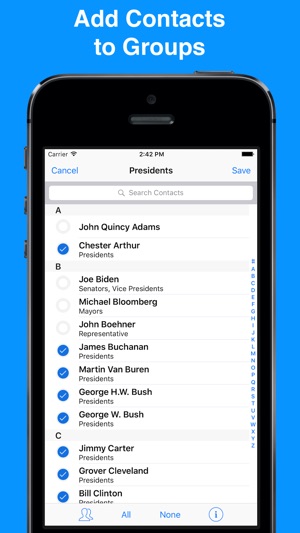Email Managers For Mac
How do you search for a word in a document on a mac. In this course, Gini von Courter shows Mac users how to streamline their Outlook 2016 workflows with tips, strategies, and techniques for reviewing email, using views to rearrange and sort email, organizing email with folders and categories, and using rules to automate many common tasks. Agile Email Management Software - Create and send professional emails and newsletters, personalize them, then track and analyze your results. Email A/B Testing, Drag-and-Drop Email Builder, Include social share buttons in your email templates, Create and store automatic response emails and Real-time notifications.
Important: If more than one person uses the same computer, Outlook profiles don't offer as much privacy as separate user accounts in the Mac OS. Outlook profiles don't offer password protection, and Spotlight searches from the Finder will locate Outlook items from all the profiles in the current user account. To learn more about how to create user accounts, see Mac Help.

Add, change, or delete a profile • From Finder, open the Applications folder. • Ctrl+click or right-click Microsoft Outlook, and then select Show Package Contents. • Open Contents > SharedSupport, and then launch Outlook Profile Manager. • Do one of the following: To Do this Create a new profile Select the Create a new profile button, and then enter a name for the new profile. Rename a profile Double-click the profile, and then enter a new name for the profile. Delete a profile Select the profile that you want to remove, and then choose the Delete the selected profile button.
Change the default profile Highlight the profile that you want, access Set the default profile, and choose Set as Default. Restart Outlook for this change to take effect. If you use Outlook in more than one capacity, such as for your personal life and for work, Outlook can be set up to handle these different capacities by using identities. An identity is associated with and stores a set of e-mail messages, contacts, tasks, calendars, account settings, Scrapbook clips, and more.
To manage identities, you must use the Microsoft Database Utility, which is installed as part of your Office installation. With this utility, you perform tasks such as creating a new identity, setting the default identity, and rebuilding an identity. When you open an Office application, it always uses the default identity.
Important: If more than one person uses the same computer, Outlook identities don't offer as much privacy as separate user accounts in the Mac OS. Outlook identities don't offer password protection, and Spotlight searches from the Finder will locate Outlook items from all the identities in the current user account. To learn more about how to create user accounts, see Mac OS Help. Create, rename, or delete an identity • Open the Microsoft Database Utility. The default location is in /Applications/Microsoft Office 2011/Office/. Notes: • The data for each identity is stored in a separate folder in /Users/ username/Documents/Microsoft User Data/Office 2011 Identities/. • schedules only run for the default identity.
• For a list of problems that may indicate that the database of an identity database is damaged, see Switch the identity used by Outlook In Entourage (available in previous versions of Office for Mac), it is possible to switch identities while Entourage is open. However, with Outlook, you must close Outlook and switch identities by using the Database Utility. • Close Outlook.
• Open the Microsoft Database Utility. The default location is in /Applications/Microsoft Office 2011/Office/.
As a designer, it is worthy enough to have as many fonts as possible, you know. You can create a variety of content by simply choosing the right font. But, wait, how do you find the right font when you have thousands of them? Well, trusting your memory doesn’t always work.
Suppose you’re a busy graphic designer who does multiple projects a day. It doesn’t sound practical to keep all the fonts’ names in your mind. And, that’s where font managers come in. What is a font management app? Adobe photoshop cs4 serials for mac. It’s an app that lets you manage all the fonts you’ve installed on your Mac and PC. A font management app should let you manage the fonts, not just show them.